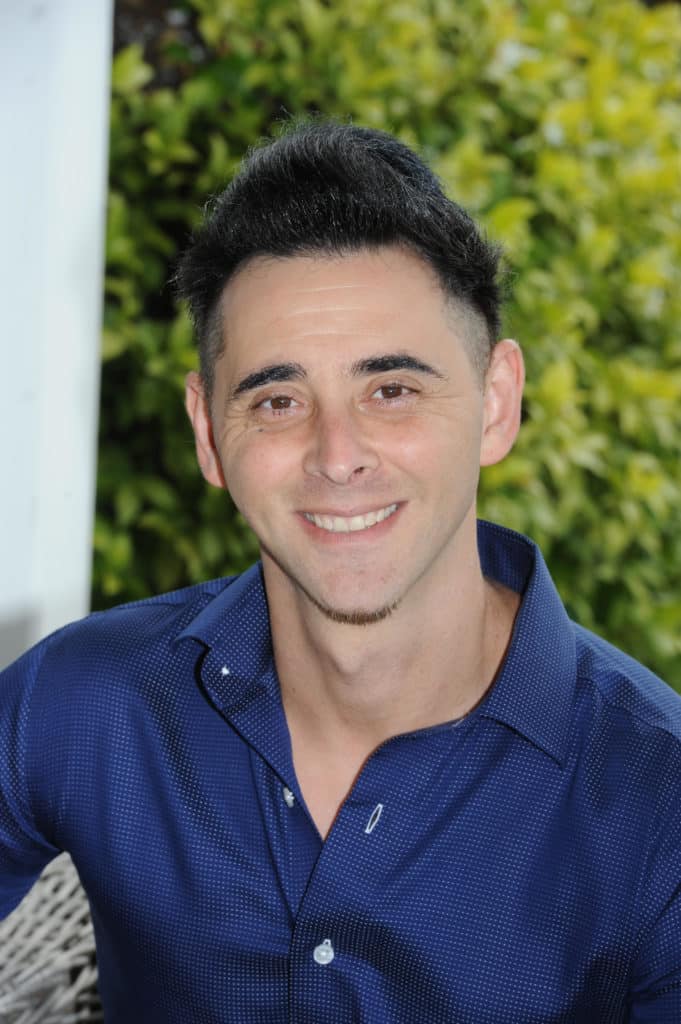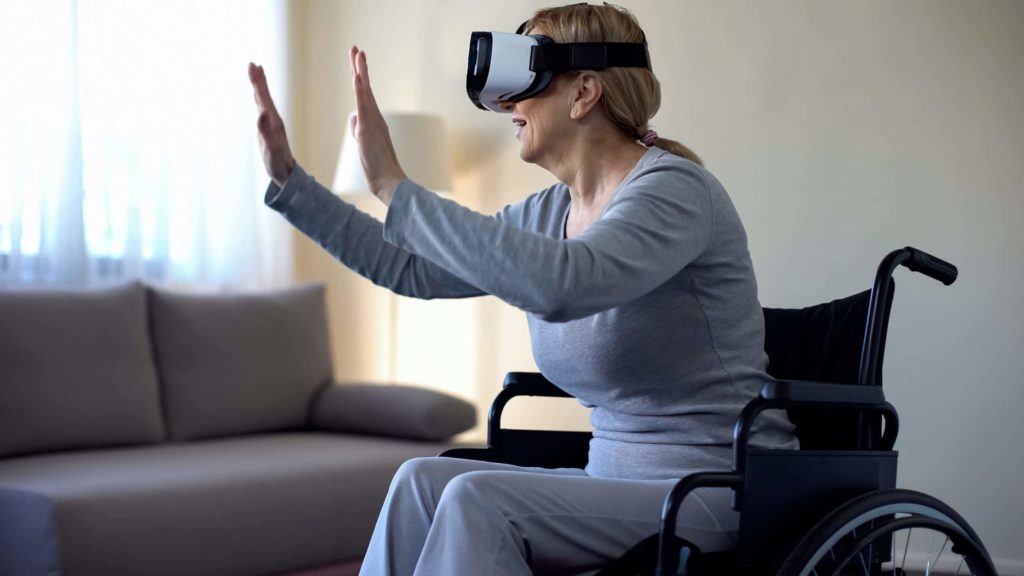According to MedicineNet, at least 10% of the world’s population is affected by chronic pain. Eight out of those 10 patients are affected by depression, and lower back pain is the most common chronic condition, globally. It’s no wonder that pain clinics are popping up everywhere, some of them being called ‘pill mills’, one-stop shops for the medicine that specialists are becoming cautious of prescribing.
“Are they really clinics? My answer is no,” says Dr Marnin Romm, a specialist interdisciplinary pain management clinician and assistant and associate professor based in Boston, United States (US), but born in South Africa.
“A true pain clinic, by definition, is interdisciplinary.”
For Romm, one of the biggest problems with pain management is the commercial side of the business. “It’s ludicrous. Where’s the sustainability of the practitioner?” he asks. “Pain is more complex than just cracking your back, or going to a physiotherapist and feeling okay for a day or two until the pain comes back with a vengeance and you have to go back. That tells me you’re not managing the patient properly, you’re not doing the right treatment and if you keep doing the same thing day in and day out, where’s the ethics?”
Based on his training, clinical experience and work as an academic, Romm believes that pain management is about self-management.
Loading...
His goal is to help his patients, many of whom have gone down the Dr Google rabbit hole, to stop relying on healthcare providers – including himself.
“It’s for the greater purpose of the good of the patient,” he explains. “I’m not here to fix them. I’m here to guide and navigate in terms of their self-management to different modalities, different tools, and a mixture of different tools, a mix of pharmacology.”
According to Romm, there has been a shift in terms of understanding the physiological and molecular mechanisms underlying chronic pain. Instead of understanding the pathophysiology underlying chronic pain, healthcare providers use pharmacological agents and invasive interventions.

“IN MEDICAL SCHOOL, THE AVERAGE AMOUNT OF TIME SPENT TRAINING DOCTORS OR PHYSIOTHERAPISTS (OR ANYONE INVOLVED IN PAIN) OVER THE SPAN OF SEVEN YEARS IS FOUR HOURS… FOUR HOURS. FOR A PANDEMIC. SO, YOU’RE SAYING YOU CAN LEARN EVERYTHING YOU NEED TO KNOW ABOUT PAIN MECHANISM IN FOUR HOURS? THAT’S IMPOSSIBLE.”
“And it’s not their fault. The reason for this is that in medical school, the average amount of time spent training doctors or physiotherapists (or anyone involved in pain) over the span of seven years is four hours,” he says. “Four hours. For a pandemic. So, you’re saying you can learn everything you need to know about pain mechanism in four hours? That’s impossible.”
Romm, who spent two years in London doing a master’s degree in pain neuroscience, says that the reason healthcare practitioners find it difficult to treat chronic pain is because they’re unable to identify what mechanisms are at play.
“In my assessments, I find out what is going on in the body and then target those mechanisms. Whether the treatment is pharmacological, more invasive, or psychological to reduce stress and anxiety or even exercise-based, but one of the biggest problems in pain management now is that’s still not the case,” adds Romm.
MAKING MONEY OFF PAIN
There’s no question that opioids are both oversupplied and overprescribed in high-income countries. Patrick Radden Keefe’s 2021 exposé about Purdue Pharma and the opioid epidemic, Empire of Pain, pinpointed the Sackler family’s marketing strategy to generate billions of dollars – which resulted in millions of addicts.
In sub-Saharan Africa, there has been a sharp increase in treatment admission trends for opioids and opioid-related disorders. A BBC investigative documentary called Sweet Sweet Codeine uncovered corruption at major pharmaceutical companies in Nigeria with staff running drug syndicates to meet the high demands of the black market. A few years after banning cough syrup containing codeine, the National Agency for Food and Drug Administration and Control (NAFDAC) reportedly shut down three pharmaceutical firms. Whether used to combat pain or recreationally, the United Nations (UN) put in a report that west, north and central Africa jointly account for 87% of all pharmaceutical opiates seized globally.
Another problem sub-Saharan Africa faces is the use of fake or substandard medications. Drugs are big business which means counterfeits and poorly-made medication benefits the pharmaceutical company that doesn’t know these products are infiltrating their supply chain and the street vendors who knowingly peddle these drugs.
A report from the UN Office on Drugs and Crime showed that 267,000 deaths in Sahel countries (Burkina Faso, Chad, Mali, Mauritania and the Niger) were linked to fake or below-par antimalarial medication. Just under 170,000 deaths have been linked to falsified antibiotics used to treat severe pneumonia in children. Sahel countries rely on imports of medical products due to their own pharmaceutical industries being in the earlier stages of development.
It is believed the counterfeit drugs are imported from pharmaceutical exporters (like Belgium, France, China and India), and diverted from the legal supply chain, or manufactured in neighboring countries.
An alternative to opioids is cannabidiol, or CBD. Different to tetrahydrocannabinol (THC) which also comes from cannabis plants, CBD is non-intoxicating in its pure form. While regulations around the world differ due to the insufficiency of solid evidence to establish its benefit versus the risks, there are many countries that have approved its use for pain. A Forbes Health survey found that 60% of the adults who use CBD in America do so for its pain relief effects. When it comes to cancer pain, Canada has given the thumbs up for CBD and so has the UK to treat the pain that comes with multiple sclerosis stiffness and spasms. In Lesotho, marijuana has become a cash crop as the small landlocked country grows and exports medical cannabis to Europe. In South African President Cyril Ramaphosa’s State of the Nation Address, he said that the legal hemp and cannabis sector has the potential to create over 130,000 new jobs in the country – the pharmaceutical market has been estimated at over R100 billion ($53 million) a year.
BRAIN TRAINING AND TECH TO TRACK AND TREAT PAIN
There’s more to the business of pain management than drugs, pharmaceuticals and otherwise. Exciting technology such as AI tools to monitor and track pain with big data to non-invasive devices that stimulate nerve fibers are being researched. Telemedicine has also become a big part of chronic pain care as some patients cannot travel to see specialists but still need to consult a doctor.
Another type of technology that’s up-and-coming in the pain space is virtual reality (VR) distraction therapy for pain relief. Dr David Binder, the director of innovation at Spaulding Rehabilitation Hospital in Boston, US, has been studying VR for a number of years. He explains that stimuli can distract the brain from receiving pain signals. In a paper for Harvard Health Publishing, he writes: “We already take advantage of this wiring all the time. For example, if you hit your elbow by accident, and it hurts, you rub the elbow and it feels better. You’re tricking the brain by producing the sensory reaction of touching the elbow, which cancels some pain signals.”
Dr Todd Maddox is part of AppliedVR, a company in Texas in the US that makes prescription VR-based therapeutics for chronic pain management. “One of the ways people learn to deal with chronic pain is with breathing mechanisms – this deals with a part of the brain that learns behavior and the goal is to engage those centers in the brain,” he explains.
Maddox explains chronic pain (and where technology fits in) as something that gets worse over time because the brain gets you into a habit that you cannot break out of. Chronic pain is not only about issues with the tissues as muscles, as one example, usually heal within six to 12 weeks, it’s how your brain processes information.

“So much of how we approach chronic pain is cognitive… but the behavior centers in the brain don’t listen to the cognitive centers very well,” says Maddox. This is why talking to someone and telling them what to do with chronic pain doesn’t always work – someone may do the exercises recommended by a physiotherapist but they also might not.
“Here’s what VR does: it broadly engages the brain. It engages your sensory and perception centers – the parts of the brain that say you’re there. It engages cognitive centers, emotional centers, you get motivated, excited and are poised for behavior change…” The research behind this non-pharmacologic form of chronic relief is exciting but it’s something that depends on good content which costs money to create. There’s also the fact that at this point, VR for pain isn’t covered by insurance unless you’re in a nursing home in America and on a CareWell plan. The alternative to what a company like AppliedVR offers is a patient buying their own VR headset and downloading a meditation app like TRIPP which combines tried- and-tested relaxation techniques with binaural audio – it just won’t be supervised by a specialist and the content won’t be specifically designed around pain relief.
Smartphones have given rise to numerous apps to track pain and others that take a more multidisciplinary approach, pairing users with a health coach who can create customized care plans.
One piece of wearable tech that is making the rounds on social media is Healy, an expensive, palm-sized device which delivers mild electrical currents to the wearer. Robyn Gilbert, a mom of two, discovered Healy from a friend. “I have pain from an autoimmune condition and Healy can mitigate it almost completely,” she says. “It has also improved my sleep, my overall energy levels, and my general sense of emotional wellbeing.” While Gilbert doesn’t feel the current – in fact, it is recommended to keep the stimulation levels low so the user doesn’t feel it – she says she felt a mental shift straight away. “People experience profound changes in many different ways, from the cessation of pain to an overall sense of wellbeing on an emotional and mental level,” she adds. Healy was invented by Marcus Schmieke, founder of the Existential Consciousness Research Institute. It isn’t approved by the FDA but that hasn’t stopped over 300,000 people from buying a device.
‘IT’S ALL IN YOUR… GUT?’
Chronic pain may be common but it’s complex and the idea that it’s all ‘in your head’ is something not every doctor agrees on.
Dr Sarette Zecharia is a clinical psychologist who works with alternative forms of pain management, including traditional Chinese medicine and Ayurveda, and is on the board of the Association for Comprehensive Energy Psychology. “Medication is a quick fix but the issue is that it’s foreign to the body and you end up taking more medication to cover up the side effects,” she says. “What I recently heard is that for each decade you’re in, you have to be on two medications and if
you’re not, it’s mind-boggling. It’s no longer normal to not be on medication.”
Zecharia has seen incredible (and less expensive) results with her pain patients by simply managing diet, using food as fuel. “In modern science, it’s very easy to find the one thing that’s the cause of everything – and medicate. Pain is in every single system, the energetic system, the physical system, the mental system, the emotional system, the spiritual system, and it has to be dealt with on all of those levels,” she adds.
New research from the Massachusetts Institute of Technology has shown that there is a connection between the gut and chronic pain because the bacteria living
in our gut can influence some neurological diseases – when the microbiome is disrupted, the communication between the gut and brain is disrupted. There is also research in the Nature science journal which validates that an out-of-balance microbiome can lead to chronic inflammatory disease. “If you think about all these psychotropic medications that people are given, it disrupts the gut and the gut is where you make the majority of your neurotransmitters. That’s where your mood comes from and that’s why food is so important,” she adds.
“Food is not important to people whose mood is regulated, but the moment your mood isn’t regulated, you start to realize the importance of food.”
The connection between pain, food and diet culture is complicated and can be attributed to various factors, including societal pressure, media influence and individual experiences. Living a ‘healthy lifestyle’ comes at a cost and the diet industry globally is worth billions ($282.53 billion by 2028 per GlobeNewswire), profiting off those who struggle with their relationship with food and body image.
While Zecharia does believe food is fuel and has seen regenerative diets work for those in pain, she says making money off pain is easy because you can charge people a fortune and “keep giving them stuff that’s just knocking them more off their center line”.
Where does the spend stop and relief begin? For those dealing with pain, chronic or acute, finding a quick fix can take a dark turn but as the field expands and researchers across different disciplines collaborate, there is hope. Says Zecharia: “I’m not saying don’t take psychotropic medication if you need it. The problem is when someone gets medication from a healthcare provider who doesn’t really know what they have. And if it doesn’t work, you keep upping the dosage, messing up your gut biome…”
Loading...
